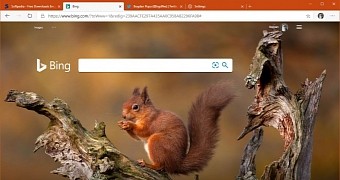Microsoft launched the new Microsoft Edge browser based on the Chromium engine earlier this month, and now users on Windows 7, Windows 8, Windows 8.1, Windows 10, and macOS can download it to check out what the software giant has been working on for the past 12 months or so.
As many have already heard, Windows 10 devices will be provided with the new Chromium-based browser via Windows Update as an automatic update, which means they are supposed to get a new browser without any action on user’s side.
However, there are a few things that you need to know regarding the way Edge will land on your Windows 10 device.
And it all starts with the download options. Basically, Microsoft is offering two different options to download Edge:
• Manual download via standalone links • Automatic download via Windows Update
As far as the manual download goes, users on all platforms can download Microsoft Edge and install it on their devices. This works just like it does for any other app and Windows version – you get the installer, launch it, and then complete the process by following the instructions on the screen.
Once you install the Chromium Microsoft Edge manually on your device, it automatically replaces the existing version of Microsoft Edge (referred to as legacy), but certain data, like favorites, passwords, and basic settings, is transferred to the Chromium sibling. In other words, you should experience a seamless transition from one browser to another, with no interruption in terms of data.
Web apps will also continue to work normally after switching to the new browser.
The automatic download on Windows Update will take place in stages. This means not everyone is getting the new browser at once, as Microsoft wants to complete more validation before shipping it to all production devices. This is a process that reminds of the Windows 10 feature update rollout when Microsoft first completes a series of verifications before pushing the update to new sets of devices.
Insiders in the Release Preview ring are the first ones to get the new browser. In other words, you may not see the new browser on Windows Update right now, but there’s always the option to manually download it on your device using the method described above.
When the new browser shows up on Windows Update, it automatically replaces the existing version of Microsoft Edge, and your data is saved, so again you get a seamless transition from one app to another. It is configured as the default browser on your device.
Enterprise and education users aren’t getting the browser via Windows Update. However, if Windows 10 Home or Pro is deployed in a certain network, organizations can use the Blocker Toolkit to block the installation of Microsoft Edge on Windows Update.
Microsoft Edge will be updated every six weeks, and updates will be pushed to Windows 10 devices via Windows Update – users will also have the option to download new versions manually using the dedicated links for these builds.
However, it’s important to keep in mind that Microsoft uses a phased rollout for the new browser, so you might have to wait more than others to get the new Edge on Windows Update. This can easily be avoided by downloading Microsoft Edge manually on a Windows 10 device, in which case the browser would no longer show up on Windows Update when it’s ready. Updates will continue to be served to your device, however.
The first stable update for Microsoft Edge is version 80, and it is due in February.

 14 DAY TRIAL //
14 DAY TRIAL //